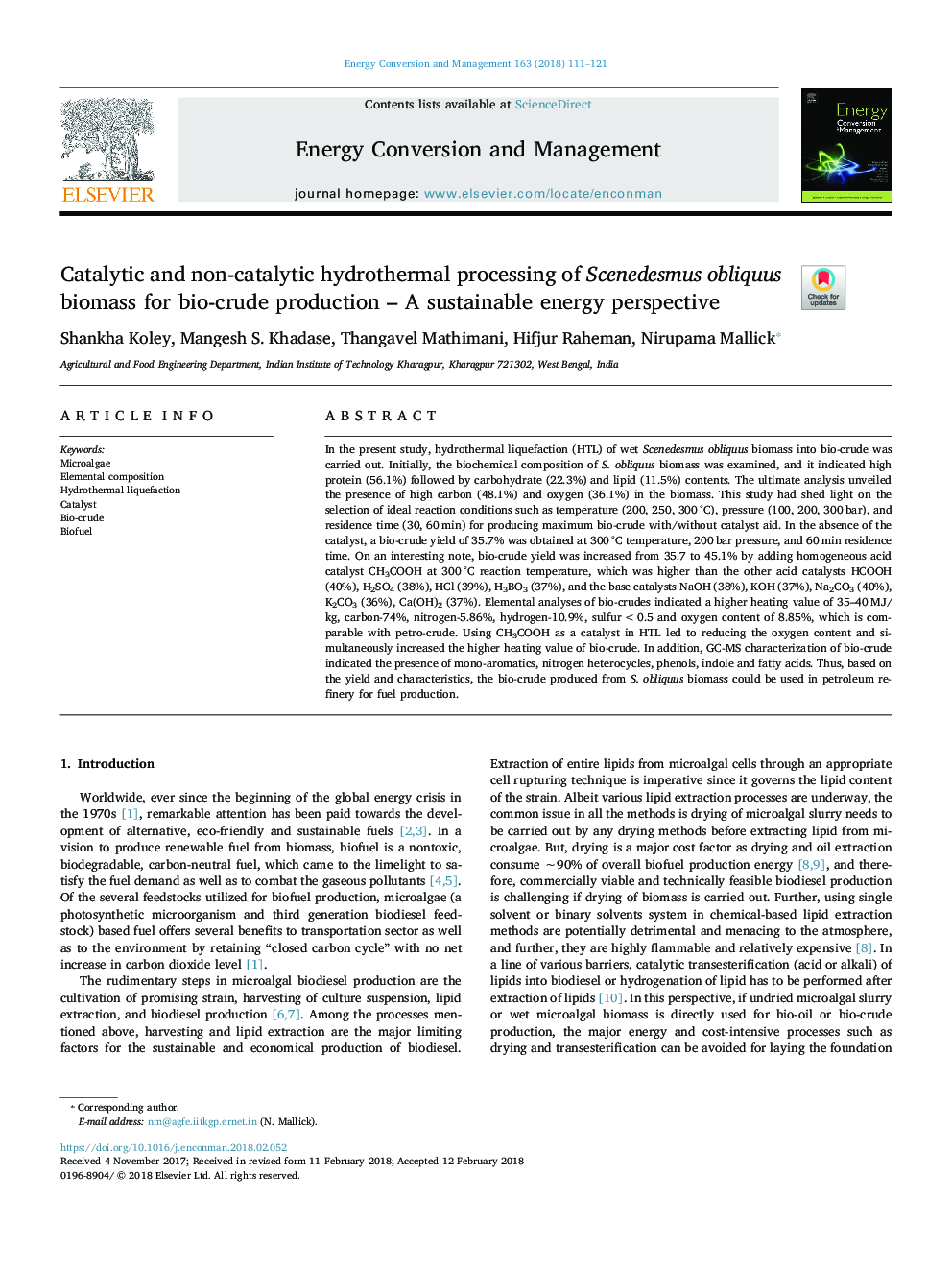| Article ID | Journal | Published Year | Pages | File Type |
|---|---|---|---|---|
| 7158798 | Energy Conversion and Management | 2018 | 11 Pages |
Abstract
In the present study, hydrothermal liquefaction (HTL) of wet Scenedesmus obliquus biomass into bio-crude was carried out. Initially, the biochemical composition of S. obliquus biomass was examined, and it indicated high protein (56.1%) followed by carbohydrate (22.3%) and lipid (11.5%) contents. The ultimate analysis unveiled the presence of high carbon (48.1%) and oxygen (36.1%) in the biomass. This study had shed light on the selection of ideal reaction conditions such as temperature (200, 250, 300â¯Â°C), pressure (100, 200, 300â¯bar), and residence time (30, 60â¯min) for producing maximum bio-crude with/without catalyst aid. In the absence of the catalyst, a bio-crude yield of 35.7% was obtained at 300â¯Â°C temperature, 200â¯bar pressure, and 60â¯min residence time. On an interesting note, bio-crude yield was increased from 35.7 to 45.1% by adding homogeneous acid catalyst CH3COOH at 300â¯Â°C reaction temperature, which was higher than the other acid catalysts HCOOH (40%), H2SO4 (38%), HCl (39%), H3BO3 (37%), and the base catalysts NaOH (38%), KOH (37%), Na2CO3 (40%), K2CO3 (36%), Ca(OH)2 (37%). Elemental analyses of bio-crudes indicated a higher heating value of 35-40â¯MJ/kg, carbon-74%, nitrogen-5.86%, hydrogen-10.9%, sulfur <0.5 and oxygen content of 8.85%, which is comparable with petro-crude. Using CH3COOH as a catalyst in HTL led to reducing the oxygen content and simultaneously increased the higher heating value of bio-crude. In addition, GC-MS characterization of bio-crude indicated the presence of mono-aromatics, nitrogen heterocycles, phenols, indole and fatty acids. Thus, based on the yield and characteristics, the bio-crude produced from S. obliquus biomass could be used in petroleum refinery for fuel production.
Related Topics
Physical Sciences and Engineering
Energy
Energy (General)
Authors
Shankha Koley, Mangesh S. Khadase, Thangavel Mathimani, Hifjur Raheman, Nirupama Mallick,
